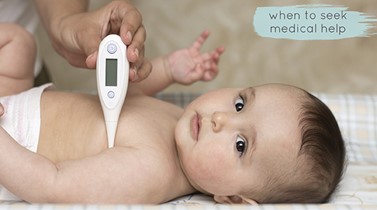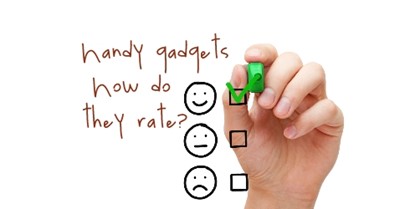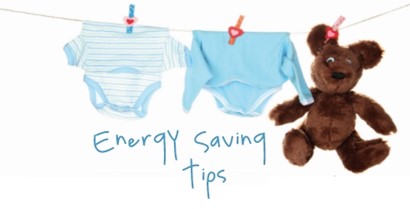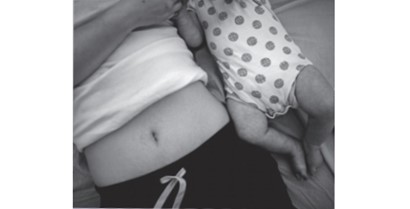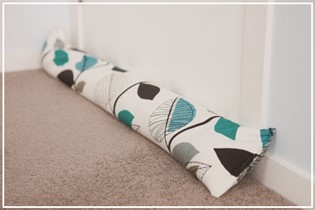What's the best age gap between children?

We could all learn from women of the Kalahari Desert who space their babies four years apart for good reason, writes Sarah Tennant.
There are a million reasons to have your babies close together. Some women don’t find a suitable partner until 40, meaning children have to be close if they’re going to be plural.
Some parents want to replicate the cameraderie they enjoyed with close-in-age siblings growing up. Women in fast-moving careers may want to take as short a chunk of time away from the workforce as possible. Some parents, fonder of older children than babies, grit their teeth and churn out three babies in quick succession, consolidating the sleepless nights and nappies into five intense but mercifully blurry years.
And of course, plenty of close spacings are unintentional.
Either way, relatively close spacings are the norm in New Zealand. Among my circle of friends, the gap between my own children — number two born when number one was three years and three months old — is large enough to draw comment. Several acquaintances had babies when I did, with one more in the middle! Two in nappies, double strollers and cars wide enough to fit three car seats in the back are standard features of Kiwi parenting.
But there’s a case to be made for a more leisurely approach to baby-having. I don’t mean a psychological case because for every close-in-age pair of siblings who fight tooth and nail, there’s another pair who are inseparable friends. No, I mean a medical case.
Simply put, a woman’s body is not designed to have children too often.
That may seem a strange statement — before birth control, didn’t women have a baby every year? Isn’t child spacing the “unnatural” option? Actually, no. The fabled Victorian matron who gave birth to 11 children in as many years before dying (much to her relief) in child birth with the 12th, was a cultural oddity. Her remarkable fertility was achieved by farming out her babies to wet nurses. A non-breastfeeding mother’s fertility can return as early as six weeks postpartum. But when women breastfeed ecologically (that is, the “natural” way, without pacifiers or bottles), fertility does not return until an average of 14 months after child birth. Even assuming a very prompt conception, that spaces babies at just under two years apart.
But many cultures around the world have considerably larger gaps than that. The Kanuri people of Nigeria aim for a gap of two to three years between children. Back-to-back pregnancies, called komkomi, are considered shameful. The !Kung women of the Kalahari Desert space their babies four years apart: a near necessity in a hunter-gatherer society where mothers carry their babies all day while foraging. In Papua New Guinea, traditional mothers abstain from sex while lactating. Due to the practice of extended nursing, this tends to space births out by four to five years.
The reasons for the spacing policies vary, but a common theme is health: the belief is that if the mother gives birth again too soon, she will become sickly and the baby will die. The concern may also be that the older child, weaned too early, will become sick or die.
Sadly, this is often true. As traditional child-spacing practices such as postpartum abstinence, polygamy, ecological breastfeeding and infanticide disappear in tribal cultures, women are having pregnancies much closer together, with high rates of infant mortality. As governments and aid workers rush to stem the tide with Western birth control, they proclaim the slogan “Three to five saves lives”, that is, babies should be spaced between three and five years apart.
It’s tempting to dismiss such caution as only appropriate for malnourished women in developing countries and certainly birth spacing is particularly important in that circumstance. But even well-fed women in the western world can benefit from a break between pregnancies.
First world problem
Studies have shown that very young mothers — girls who give birth within two years of their first period — are at an increased risk of pre-term birth, low birth-weight babies and babies born small for their gestational age (SGA). The problem is nutrition. The growth spurts and tissue development of puberty use up a lot of a teenager’s nutrient reserves and sometimes there just isn’t enough left to spare for the baby. For the same reason, babies in multiple pregnancies tend to be smaller and at greater risk of growth retardation and pre-term birth.
Women with back-to-back pregnancies are in a similar position. Without adequate time to restore the nutrients given to baby number one, baby number two gets the short of end of the stick. Medical literature speaks of “inter-pregnancy intervals” (IPI), the time between the birth of one child and the conception (not birth) of the next. Studies have shown that regardless of age or socio-economic status, even well-nourished first world mothers are at a greater risk of pre-term birth, low birth weight and SGA babies with an IPI of less than 18 months. The risks are highest for IPIs of less than six months.
What’s missing?
In developed countries, it’s rare for foetuses to be deprived of macro-nutrients — that is, fat, protein and carbohydrates. Our caloric intake is generally high enough to avoid this problem. Micro-nutrients are a different story. In particular, nutrients such as iron and folate tend to become severely depleted during pregnancy and the body takes a long time after birth to rebuild its stores, especially when breastfeeding.
We all know the importance of taking folic acid supplements to prevent neural tube defects and, indeed, babies conceived after short IPIs have a slightly higher risk of these defects. Low folate is also implicated in growth-restricted babies and now it appears folate may play a crucial role in brain development.
One study on schizophrenia concluded, “Risk of schizophrenia was increased by approximately 150% in those born following a pregnancy interval of six months or less... These findings support the hypothesis that folate (or other micro-nutrient) deficiency during foetal development may be an important risk factor for schizophrenia.”
Another study of Californian siblings found that second children conceived within a year of their older siblings were more likely to be diagnosed with autism. In fact, a slight increase was observed up to a 36-month IPI.
Researchers speculated that a folate or iron deficiency might be the culprit. Lending support to this hypothesis, a study in Norway found that women who were taking prenatal folic acid supplements were less likely to have autistic children.
Looking after number one
It is clear, then, that the comforting adage “Babies take what they need” is not entirely true: deficiencies can occur. Nevertheless, babies have no compunctions about stealing nutrients, even if their mother is in the middle of using them. DHA, an omega-3 fatty acid, is in great demand during pregnancy. Large quantities are needed to develop the baby’s brain and eyes. If the mother is depleted of DHA and does not take supplements, the baby will calmly take the excess... from her brain. “Mommy brain” indeed.
What’s more, studies on pregnant rats indicate that not all parts of the brain are mined equally. Specifically, the dopamine receptors (areas which process feelings of trust and pleasure) are depleted. The research isn’t conclusive, but if the same holds true for humans it would explain why short IPIs are a risk factor for postnatal depression.
And closely spaced pregnancies have other effects on the mother. A report on one study read: “Women who had less than an 18-month gap between children had a death rate after the age of 50 that was 20% higher than those with a larger sibling age gap. They were also more likely to suffer long-term illnesses such as diabetes and arthritis later in life.”
Interestingly, the same study showed fathers also suffered higher mortality rates due to closely spaced children, though not to the same degree as mothers.
Having another baby too soon after a Caesarean section is also risky. When you think of the tremendous constricting, squeezing and expanding a uterus does during labour, it makes sense to let any large incisions in it heal thoroughly before putting it through its paces again!
Women with IPIs of less than six months are at an elevated risk of uterine rupture during labour and more likely to require blood transfusions. Waiting to conceive again also lowers the risks for placenta accreta (where the placenta implants into the scar tissue of the incision), placenta previa (where it implants low down in the uterus, blocking the cervix), and placental abruption (where the placenta tears away from the uterine wall).
How late is too late?
Given the clear benefits of rebuilding nutritional stores, you’d think the longer you had to rebuild them, the better. Strangely enough, that doesn’t seem to be the case. For many outcomes, including low birth weight, prematurity and small babies, the risks climb up again after a 59-month (five-year) IPI, reaching statistical significance after 69 months. Additionally, an IPI of more than five years increases the mother’s risk of pre-eclampsia and of an abnormal or difficult labour.
This is a puzzler. It’s tempting to attribute the risks to increased maternal age, which we know is a risk factor for all sorts of conditions; but studies have controlled for that variable and found the principle still held.
One theory is that such a long IPI often indicates an “oops” pregnancy — a mother who thought she was done with child birth, and consequently wasn’t worrying about taking folic acid or eating a baby-friendly diet. It’s possible, but no one knows for sure.
The magic spacing, then, from a purely biological point of view, appears to be somewhere between three and five years (between births, not conceptions, although medical opinions differ on the exact cut-off.) An added benefit of this spacing is allowing the older child his full WHO-recommended two years of breastfeeding, without the diminished milk supply many women experience when pregnant.
Well, great, we’re doomed
If at this point you’re guiltily apologising to your foetus for the substandard life to which you’ve inevitably doomed her in your haste to stop the “When’s he getting a sister?” questions... don’t. She’ll be fine. You chose that spacing for a good reason, didn’t you? (Or if you didn’t choose it, well, blame the baby. If you show up uninvited, you get what you’re given — a lesson she may as well learn now rather than later.)
Do recognise, though, that your body is going above and beyond the call of duty, and deserves all the help and nourishment it can get! Supplements of folic acid, fish oil (for omega-3), iodine and zinc rarely go amiss, and a decent prenatal vitamin isn’t a bad idea either. And if you feel inclined to eat like a horse, “I’m replenishing my nutrient stores!” is as good an excuse as any.
But don’t get a side-by-side double stroller. They are a pain.
Sarah Tennant has two children, spaced 39 months apart for angsty psychological reasons. She highly recommends this gap for sanity’s sake. Sometimes she even has time to get stuff done!

AS FEATURED IN ISSUE 25 OF OHbaby! MAGAZINE. CHECK OUT OTHER ARTICLES IN THIS ISSUE BELOW





